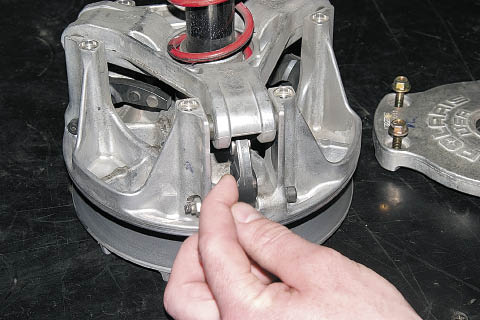Primary Weights
 The weights in a CVT clutch system are the main factor in controlling peak rpm. They also have a significant effect on how fast the clutches shift out. A simple rule to remember is heavier weights equal less rpm and lighter weights equal more rpm.
The weights in a CVT clutch system are the main factor in controlling peak rpm. They also have a significant effect on how fast the clutches shift out. A simple rule to remember is heavier weights equal less rpm and lighter weights equal more rpm.
Let's say your stock RZR makes its peak power at 6500 rpm. To get the best performance out of it, you want to tune the clutches to hold the peak rpm at 6500 rpm during full throttle operation. But you're taking a trip to the mountains where the RZR will make less power because of the higher elevation. This means that it won't want to run at 6500 rpm but instead will only spin 6000 rpm. By installing lighter weights in the primary clutch, the engine won't have to work as hard to rotate the clutch, making it easier to spin up to 6500 rpm.
Weights also affect how fast the clutch can shift. Using heavier weights will make the clutch try to shift open faster. This is good because the faster the clutches shift open, the faster the RZR will accelerate. Get the weights too heavy and the clutch will shift open too fast and pull the rpm down away from where it makes its most power, resulting in slower acceleration and lower top speed.
Primary Spring

